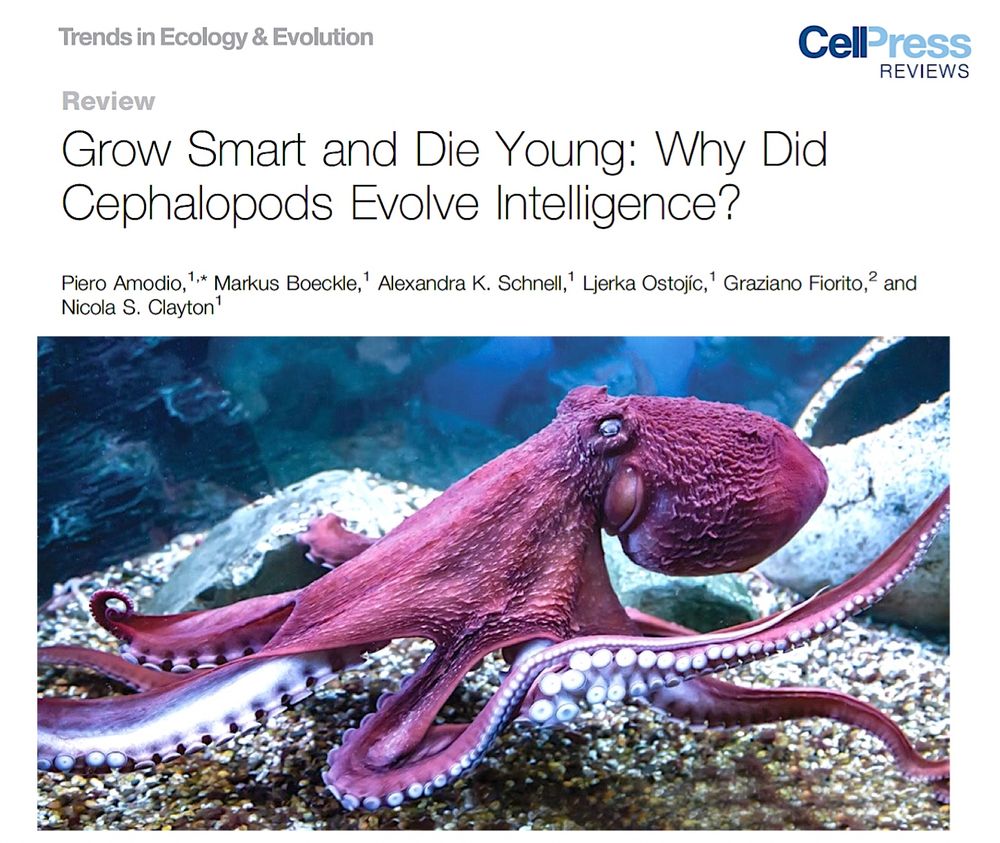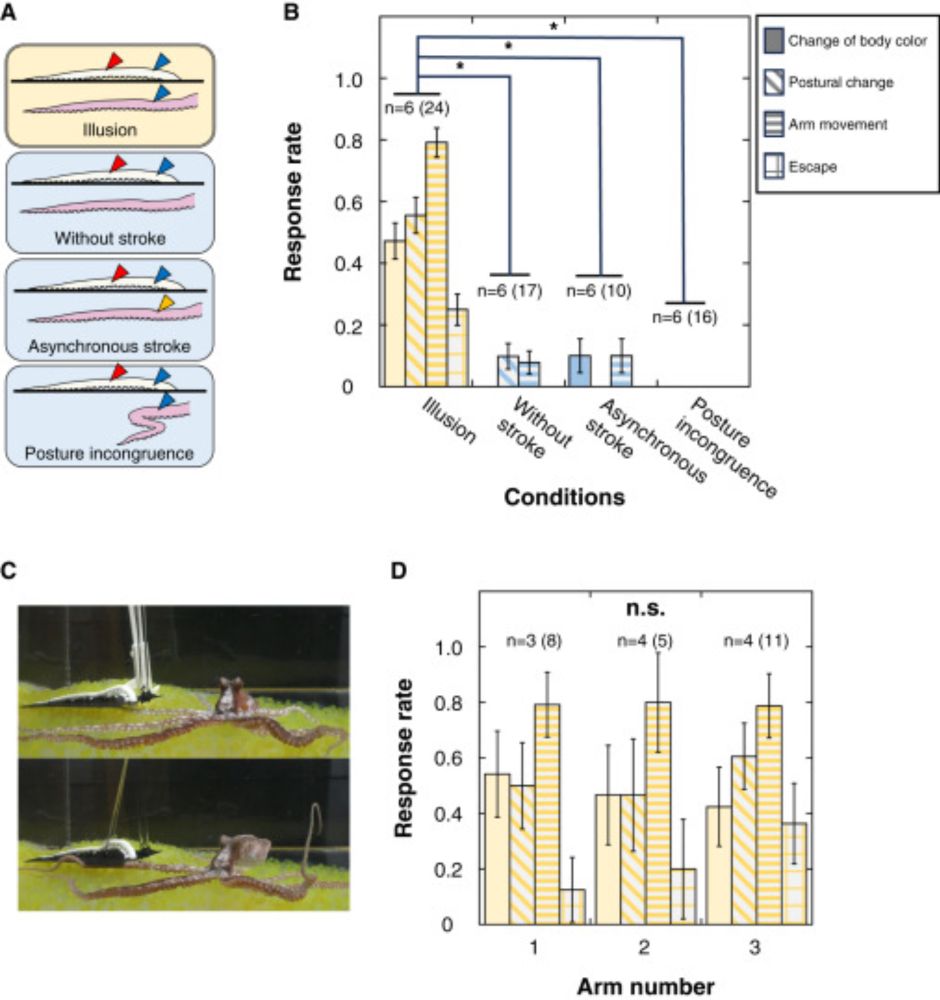I was looking for a game to practice my portugese a while back and got recommended this series, but never actually tried any. This looks cool! A vida encontra um caminho..
21.10.2025 20:30 — 👍 0 🔁 0 💬 0 📌 0
It's wild coming from cognitive science to comparative cognition. In cogsci, cognitivism is largely seen as dead and has been for some 20+ years.
It is common to view cognition as being for action. In psychology too.
Yet, this is where they put the blame? The field needs more cogsci, not less.
15.08.2025 02:10 — 👍 2 🔁 0 💬 1 📌 0
Complexity Group Email List | Brain Inspired
Been really enjoying the Complexity Science Discussion Group hosted by Paul Middlebrooks, where we're working our way through the Santa Fe Institute's "Classic Papers in Complexity Science". The group is open for anyone interested:
braininspired.co/complexity-g...
19.07.2025 15:14 — 👍 89 🔁 26 💬 7 📌 3
Now, some thoughts on seeing Aquilops on the big screen! "Our" little dino was one of the stars of Jurassic World, and that was quite an experience as one of the scientists behind the research. (1/n)
06.07.2025 13:35 — 👍 83 🔁 29 💬 4 📌 2

Why did cephalopods develop intelligence? And why, being so intelligent and cognitively complex, do they die so young? In this @cp-trendsecolevo.bsky.social paper, the authors explore this paradox from an ecological and evolutionary perspective. www.cell.com/action/showP...
29.06.2025 10:23 — 👍 86 🔁 19 💬 2 📌 4
Our letter is out in @cp-trendscognsci.bsky.social
We argue against a recent claim that animals cannot make mental simulations because they supposedly do not reliably memorize sequences. The evidence for model-based animal cognition is too overwhelming. 🧪
authors.elsevier.com/a/1lKMt_V1r-...
26.06.2025 10:52 — 👍 14 🔁 3 💬 2 📌 0

A 2.5 meters long female alligator which kept her juvenile colouration. She has a dark back and a yellow underside, notably with yellow lower jaw and throat and yellow stripes on her flank. She lies serenely on the green, fake grass of an indoor enclosure, with a wall and doors in the background.

A close-up on the head of the alligator in the previous picture. She has a juvenile colouration with a dark back and a light yellow lower jaw and throat. We can see the big teeth coming out of her upper jaw and the black pupil in her dark brown eye. She lies serenely on green, fake grass of an indoor enclosure.
I did some data collection with the alligators yesterday and I took a couple of pictures of Sigi after her feeding. She was probably feeling very satisfied.
26.04.2025 11:08 — 👍 9 🔁 3 💬 1 📌 0
The field of behaviour genetics has turned out to be something of a damp squib: “genomic information is a statistically non-zero but all in all relatively minor contributor to behavioral differences”
06.04.2025 16:21 — 👍 29 🔁 11 💬 1 📌 0
Evolution of neurons and nervous systems / choanoflagellates / sponges / ctenophores. Group leader at the Michael Sars Centre (University of Bergen). @msarscentre.bsky.social Webpage: https://www.uib.no/en/michaelsarscentre/114773/burkhardt-group
https://www.valerialoves.com/
The second best trans woman who reviews indie TTRPGs while taking baths, somehow.
Writer & presenter for Quinns Quest & People Make Games. quinnsquest.quintinsdomain@gmail.com
Macroecologist and modeller - now at UCM https://jrubalcaba.github.io/
Netherlands based British YouTube animator, makes Mothership TTRPG content. 🇺🇦🏳️🌈 https://linktr.ee/wacomatrixo
Intro to causal inference for psychologists:
https://czasopisma.uwm.edu.pl/index.php/pp/article/view/9731/7171
A causal-theoretic definition of measurement invariance (see p. 14):
+
A new ordinal regression family
https://osf.io/preprints/psyarxiv/e7a3x
Cognitive scientist, writer, podcaster. Interested in the diversity of communication & cognition. Language, gesture, concepts, time, space, metaphor.
Host of Many Minds (@manymindspod.bsky.social)
www.kensycooperrider.com
Assistant Professor in EEMB @ UCSB | Evo-Devo • Botany • phylogenetic comparative methods • meristems
https://www.martinezgomezlab.com/
Researcher @
Max Planck Institute of Animal Behavior
📍Konstanz 🇩🇪
brain 🧠 | behaviour 🎬 | shrews🐭
Unexplainably obsessed with flamingoes 🦩
Like my art? You can support it!
https://ko-fi.com/cecibaldoni
cecibaldoni.github.io 💁🏽♀️🌐
The Centre for Logic and Philosophy of Science (CLPS) at the Institute of Philosophy (@kuleuvenuniversity.bsky.social) focuses on #logic and #philsci, with a concentration on the philosophies of the special sciences • https://hiw.kuleuven.be/clps #philsky
Evolutionary ecologist and open science advocate. Interested in social evolution, population dynamics, statistics, and open science. Parent x2. Incompetent but enthusiastic naturalist
Neuroscientist. A node in a network. My lab: https://hippo-circuitlab.es
Personality psych & causal inference @UniLeipzig. I like all things science, beer, & puns. Even better when combined! Part of http://the100.ci, http://openscience-leipzig.org
We fund innovative projects that push the boundaries of scientific knowledge and help people flourish. Visit our website https://www.templetonworldcharity.org/
is this the one that wins
Fostering interdisciplinary collaboration among scholars and storytellers interested in the origins, nature, and future of intelligences.
Web: www.disi.org
Podcast: Many Minds (@manymindspod.bsky.social)
Asst. Prof. and DDLS fellow
Dept. Zoology, Stockholm University and SciLifeLab
🇦🇷 -> 🇫🇮 -> 🇸🇪
Evo-devo and dynamical systems
https://lisandromilocco.github.io/
Principal Data Scientist @ PyMC Labs
PhD in Bio-Anth. Behavioral ecology, phylogenetics, statistics & causal inference.
https://erikringen.github.io/







